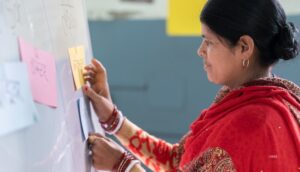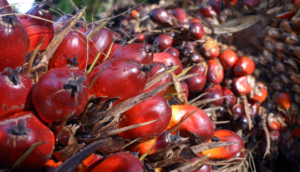We are just midway through the year and yet 2019 has already seen several unprecedented weather events from Cyclone Fani, which evacuated more than a million people in India, to the two storms that devastated the Mozambican coast.
These disasters have thrown into sharp focus just how much climate change is compounding our already complex challenge of global development, putting the health of people and planet at risk, and undermining the progress we have made.
As the international community grapples with how to address the impact of a changing climate on millions of already vulnerable people, what has emerged is an extensive resilience emergency.
When we talk about sustainable development, resilience means the ability of vulnerable people and communities to navigate shocks and stresses while continuing to improve their wellbeing. In an environmental context, it means moving beyond incremental climate mitigation and adaptation approaches towards proactive strategies that empower societies to transform their futures despite increased volatility and uncertainty.
In 2017 alone, 200 million people needed $27 billion in humanitarian assistance to cope with crises including floods, droughts and storms. But for every dollar spent on proactive resilience building, three to five dollars are saved in humanitarian assistance.
And so-called “resilience multipliers” exist and offer multiple benefits to achieve our development goals even as extreme weather events continue to increase and intensify. As donors, there are several key areas where we believe investment can make the most difference.
Empowering women
Women are the most vulnerable in disaster situations, but also powerful agents of change and stabilizing forces within communities. Countries with just 10 per cent of women in the labour force are nearly 30 times more likely toexperience internal conflict compared with countries with 40 per cent in the labour force.
In India, Bangladesh and Nepal, the Mahila Housing Trust is working to build the resilience of women in urban slums, through structural adjustments to their dwellings, as well as building community groups of women who share information and develop networks of support, for example informal saving schemes and micro-insurance products.
Making finance more inclusive
Having access to financial services improves disaster preparedness and speeds up recovery afterwards. However, less than 10 per cent of the 500 million smallholder farmers globally have access to financial services.
In drought-prone areas of Kenya, Mercy Corps has partnered with Equity Bank to develop the first Sharia compliant financial products for livestock traders. The loans enabled livestock traders to purchase and fatten dying animals when drought hit, which in turn helped farmers gain an income in adverse times. These types of interventions not only help the livestock herders and traders survive, but also reduces the pressure for herders to migrate to new areas – a known cause of dispute and conflict with more sedentary crop farmers.
Deploying big data and modern communication technology
Helping communities access meteorological data and mobile phone technology, for instance, can greatly improve opportunities to self-organise and support each other.
In the Philippines, the Grameen Foundation is providing over 25,000 coconut farmers with real time data and services to connect them to markets and prepare for extreme weather events and pest invasions. More than 40 million trees have been lost to storms and pests since 2013, so such early warning systems are now proving invaluable.
Boosting nature’s own buffers
Protecting and restoring wetlands and mangroves can buffer the impacts of extreme weather events and support recovery afterwards. These coastal ecosystems can buffer sea storm surges but also serve as carbon sinks and also offer nurseries for fisheries to provide a livelihood source for local communities living there.
In Sri Lanka, Seacology and the Sri Lankan government are working towards an ambitious goal to restore all the mangroves along the island country’s coastline. The civil war destroyed large tracts of mangroves, leaving women and young people without an income and exposed to more frequent flooding storms. Investing in mangrove restoration, as well as the economic empowerment of women and youth, has simultaneously reduced exposure to extreme weather and created a more stable and equitable society, serving as a foundation for stability and peace.
In all of these examples, the most promising solutions are not single answers to isolated challenges. Instead, they recognise that sustainable development relies on addressing multiple factors through building and then multiplying resilience.
For companies, investors and donors, then, the best returns on development funding will come from initiatives that foster greater resilience to economic, social and, increasingly, environmental shocks.










